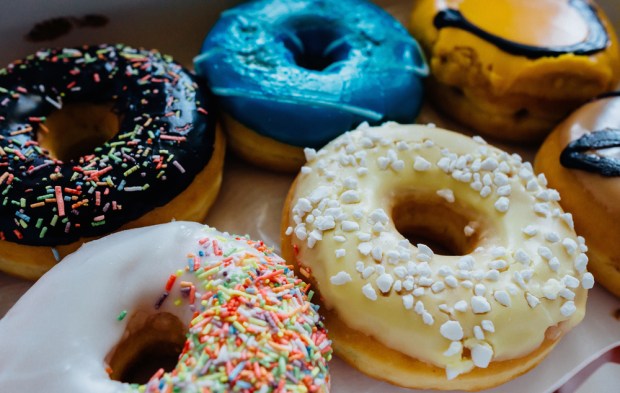Many Waze To Satisfy A Dunkin’ Crave

No direction home, sang Bob Dylan, who never had Waze, and never had a Dunkin’ on the Waze way, we’d guess.
Tongue-in-cheek aside, Waze has debuted an “order-ahead” feature with Dunkin’ Donuts that lets users of the former order the latter and pick up said order at the restaurant upon arrival. The Dunkin’ mobile app connects to the Waze app on Android and iPhones, with an eye on mobile as the conduit for satisfying the cravings for carbs, sugar and Joe.
In an interview with Karen Webster, Jordan Grossman, Waze, head of brand partnerships at Google (who owns Waze), said, “This is essentially the first phase of what we see as being a deeper integration in the future.”
“From a technical standpoint,” he continued, “we’re deep linking so that on Waze you can find the nearest Dunkin’s to your current location or one that will be along your route when you are actually in the ‘drive’ mode … then we will connect through the deep link to launch the ‘order-ahead’ screen.”
Grossman told Webster the interaction entails the need to have the Dunkin’ app downloaded so that people can place their orders “without having to toggle back and forth between the apps.” But Waze isn’t actually handling the transaction; rather, Dunkin’ is.
The pair discussed the usefulness of voice in interacting with the app in a way that allows for hands-free navigation through an order, in a larger sense. The user can speak to Waze “in the same way that you would speak to Siri or Alexa,” said Grossman, who also noted that his firm continues to explore the ways the hands-free feature can be used to move through an advertising-to-consumer relationship, with an eye on possibly having the order done through voice.
But this is just the beginning, Grossman said, which is to pair technology with relevancy, based upon the context, which is knowing that that consumer is just about to initiate a drive, but along the context of the drive itself, is the day of the week, the time of the day and then the context of the journey, he told Webster.
“So knowing point A being the origin, and Point B being the destination, and knowing everything that is going to be in the path in between, such as a drive-through, is where the magic happens,” he explained.
Grossman also mentioned that Waze and Dunks have created a mobile interface so that someone doesn’t have to talk to a screen at the drive-through, helping reduce the time of the order itself. Nirvana, he suggested, is to have the order waiting for the consumer by the time they get there — the kind of perfect partnership that enhances the consumer experience.
“[Commuting and getting a cup of coffee] are things [consumers] would be doing anyway. We are just making it a hell of a lot easier for them to do it,” Grossman acknowledged.
This type of interaction, Grossman said, is helping to change the role of the advertiser by making ads less intrusive and more relevant. The Waze/Dunkin’ model, he says, is one in which the brand itself becomes a partner with the consumer.
“Rather than throwing everything against the wall and hope that is sticking, it is aligning with the right person” with timeliness, he said. And timeliness can be granular, considering the weather, for example, where a sweltering day would bring forth promotions for iced coffee, while the converse would be true on colder days.
For the consumer, the convenience of saving time (and conducting commerce) on routines that were pre-determined anyway, opens up a number of use cases for such contextual relevance, Grossman emphasized. Imagine returning an unwanted item, for example, doing the required paperwork entirely via app, and dropping the item off to someone who is waiting outside the store.
And this streamlined experience can be extended to other scenarios, said Grossman, who cited Waze’s carpool app, thus far live in Tel Aviv, Israel and the San Francisco Bay Area.
“There’s not a lot I can say regarding the U.S.,” he said. The company is leveraging its technology to pair drivers with riders – not with professional drivers but as a ride-share service, he said.
“So if you are commuting, and there is a handful of people in your area that are commuting to the same place, they can request a ride. You would give it to them … and you are doing good for the community … and the driver gets reimbursed for wear and tear on the car.”
That reimbursement includes fuel, mileage and “if we can centralize that spot where they are being picked up,” for example, a Dunkin’ Donuts, “and as part of the value that we can offer the driver beyond reimbursing them for wear and tear, let’s say that their three passengers will order a Dunkin’ and the driver gets a Dunkin’ for free as an incentive.”
In the meantime, it could be the case that, aided by the Waze and Dunkin’ deal, that spare donut in the trunk might be supplemented by … donuts in the backseat.
